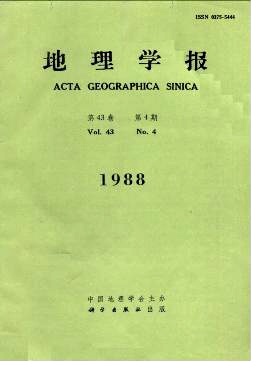Qian Weihong
In this paper, the fluctuations of quasi-44-month, quasi-11-year, quasi-24-year and quasi-49-year periods of the earth rotational rate are found from the analysis of its data of the years 1820-1983. The anomalies of Southern Oscillation (SO) index, the motions of the atmospheric centres of action, the variations of sea surface temperature in the eastern equatorial pacific and the changes of long-range weather can be related with the periodic fluctuations of the earth rotational rate. It has been found that SO index becomes weaker (stronger), active centres of atmosphere move northwest-ward (southeast-ward) and annual precipitations increase (decrease) in Africa arid region, while the long-range earth rotational rate (fluctuations of quasi-24-year and quasi-49-year) speeds up (slows down). It has been also found that sea surface temperature is lower (higher) in the eastern equatorial Pacific, while the short-range earth rotational rate (quasi-44-mouth)speeds up (slows down).Microcomputer is having great impact on geographical teaching and research. Paucity of software has limited the use of microcomputers when they were first developed, but a large number of software have now been developed, ranging from word processing, spread sheet, data base, statistical analysis, simulation, computer assisted learning, digital image processing, computer assisted cartography, to geographic information system. Microcomputer has provided a relatively inexpensive but powerful tool for geographical teaching and research. Although there are some limitations in the existing microcomputer hardware and software, they are adequate to meet most of the needs of geographical teching and research. It is unnecessary to wait for faster and more powerful microcomputers to be developed before entering the field of microcomputing. Further reduc.ion in price and size, and increase in speed, memory, portability, and data storage with undoubtdly increase the practical use of microcomputers. Microcomputers is playing an important role in geographical teaching and research, especially for education and research institute which have little resources. This paper discusses the use of microcomputers in geography, outlines the availability of geography software, and examines some constraints in using microcomputers in geographical teaching and research in Britain and America. These experience may help to increase the use of microcomputer’; among geographers in China.Many functions are offered by microcomputers. However, their applications and relevance in secondary and higher geographical teaching and research differ. Most of these functions are used in varying degrees in geographyical teaching and research in universities and research institutes, but not all of them are needed in secondary schools. In secondary schools, it is desirable to expose students to computer assisted learning at lower forms, and gradually introduce them to some simple computer packages at upper forms. The use of microcomputers also varies according to different subfields of geography. Subjects related to physical geography, photogrammetry, remote sensing and cartography may use microcomputers more than those in human geography. The main constraints that limit the present use of microcomputers in geographical teaching and research are hardware, software, "liveware", space, integration into curriculum, and teaching skills.Microcomputers are already being used in some key universities and research institutes in-China and some good software have been developed. When microcomputers are becoming more popular in China, geographers in China may face similar constraints that were experienced in the current applications of microcomputers in Britain and America. Much in-vestments in money, manpower, and time should be prepared to spend in overcoming these constraints. The use of microcomputers in China is further constrained by the lack of Chinese software and standardization of Chinese input and data storage system. The organization of microcomputer workshops and the establishment of a netwo
